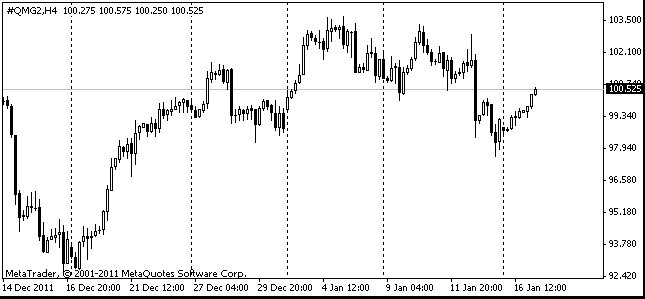EUR/usd
The miracle that was awaited by many hasn't happen. The utterly poor EU Prelim PMI figures that came in yesterday morning deeply upset the market participants. Yet unfortunately it was not the only bad news of the day. According to the Markit PMI data for Germany, the affairs of the local manufacturers are now at their worst since summer 2009. The preliminary PMI figure for June dropped down to just 44.7. France and euro-Zone in general feel a bit better then forecasted. But we believe that they won't be able to show better dynamics than Germany for any significant space of time. The thing is that most countries have to carry out budget consolidation. Yesterday we also heard about the job cut in the government sector and also about the intention of some large corporations to launch an austerity drive by means of staff reduction. Today's business climate data for Germany proved to be a bit surprising. It's quite normal that the actual figures for June (the decrease down to 105.3) came in much worse than expected (106.1). Nevertheless, the IFO-Current Assessment even rose from 113.3 to 113.9. Is that all about the weak euro? This way or another, the expectations are now much worse. Yesterday we also saw surprisingly poor data on the US housing market. Existing Home Sales have shrunk by 1.5% in May. Looking at the scale of the decrease, we cannot speak about anything serious, but still it somehow cools the ardour about the unshakeable improvement in this sector of the USA. Meanwhile, the Philly Fed Manufacturing Index has also proved to be disappointing. Despite the forecasted growth in June it dropped down to -16.6 against -5.8 a month before. We were wrong when said that the trend would keep upwards. By one powerful movement yesterday most bulls were beheaded. EUR/USD sank below the lows posted at the beginning of the week and at some point even hit the 1.2530 level. For now it looks as though the growth from 1.23 to 1.27 had been a mere correction of the drop from 1.33 and further might be followed by a new wave of sales. Will Europe really fail to come up with something effective to resolve the crisis? If true, it will swallow up even Germany.

GBP/USD
Most market commentators chuckled as the Moody's cut the ratings of the four largest banks of Britain and the world, for the intention had already been announced a month before. Anyway, traders decided to take advantage of this news and with its help to put a stronger pressure on the risky assets. Yesterday the British pound sank from the daily high of 1.5730 down to 1.5570 and is now trading above 1.56. By the way, the growth towards the area of highs was largely caused by the release of strong retail sales data. As messaged by ONS, the retail sales grew by 1.4% last month and by 2.4% against the figure posted in May. However, this good news is not a patch on the across-the-board risk aversion, pressing the pound. Don't forget that the sterling is very sensitive exactly to the banking issues.

USD/JPY
The Japanese yen is depreciating faster. This morning it was already at 80.40 though on the first day of the month the pair sank down to 77.60. It's quite a good leap, especially if we take into account the growing risk aversion. Has investors suddenly started to regard the yen as a risky asset? It can hardly be that, as at the beginning of the week the pair was going up against the market growth. The current growth is expalined mainly by internal reasons.

oil
Oil is still strong enough to hit new local lows. Yesterday parallel with the bond sales the cost of WTI Oil dropped below $79/barrel. For this grade of oil it is the lowest level since last October. The reduction of geopolitical risks drove brent Crude down to the lows posted 1 ½ years ago and the quotes fell below $90. Then, in 2009 and 2010 the consolidation was held around 80. As has been mentioned above, the activity indicators also make it clear that the current affairs are running as bad as at that time. Will the oil price really go back to those levels?
